
Il BMW Group ha reso disponibili sul mercato italiano 21 modelli elettrificati tra Full Electric e Plug-in Hybrid e 71 dotati di tecnologia Mild Hybrid a 48 Volt.
Il BMW Group sottolinea con un piano decennale il suo impegno per gli obiettivi dell’accordo di Parigi sul clima, concentrandosi principalmente sull’espansione della mobilità elettrica.
 Attualmente, i marchi BMW e MINI con sistemi di propulsione completamente elettrici e ibridi plug-in rappresentano già circa il 13,3 percento di tutte le nuove immatricolazioni in tutta Europa (fonte: Rapporto IHS Markit New Registrations luglio 2020). Ciò corrisponde a 1,5 volte la quota media di tutti i marchi, che è circa l’8 %. Il Gruppo prevede che questa cifra salirà a un quarto entro il 2021, a un terzo entro il 2025 e al 50 % entro il 2030.
Attualmente, i marchi BMW e MINI con sistemi di propulsione completamente elettrici e ibridi plug-in rappresentano già circa il 13,3 percento di tutte le nuove immatricolazioni in tutta Europa (fonte: Rapporto IHS Markit New Registrations luglio 2020). Ciò corrisponde a 1,5 volte la quota media di tutti i marchi, che è circa l’8 %. Il Gruppo prevede che questa cifra salirà a un quarto entro il 2021, a un terzo entro il 2025 e al 50 % entro il 2030.
I veicoli dei marchi BMW e MINI dotati di sistemi di propulsione elettrificata sono ora offerti in 74 mercati in tutto il mondo, dove sono stati venduti oltre 500.000 veicoli elettrificati fino al 2019. Entro la fine del 2021, questa cifra salirà probabilmente a oltre un milione. Nonostante le restrizioni legate alla pandemia, nella prima metà del 2020 sono stati venduti più veicoli del BMW Group rispetto al corrispondente periodo dell’anno precedente. Gli obiettivi di sostenibilità del BMW Group mirano a mettere su strada in tutto il mondo entro il 2030 più di sette milioni di veicoli con sistemi di guida elettrificati, due terzi dei quali varianti completamente elettriche. Come risultato della massiccia espansione della mobilità elettrica, le emissioni prodotte dai veicoli del BMW Group per chilometro percorso saranno ridotte di circa il 40 % entro il 2030.
BMW iX3, la BMW i3 e la MINI Cooper SE, i modelli full elettrici
 Con la quinta generazione della tecnologia BMW eDrive presente nella BMW iX3, l’efficienza e lo sviluppo della potenza del motore elettrico, il contenuto energetico della batteria ad alto voltaggio, la capacità di carica e il controllo intelligente dell’intero sistema raggiungono un nuovo livello. Il motore elettrico di nuova concezione dell’auto eroga 210 kW/286 CV e aziona le ruote posteriori. Il primo Sports Activity Vehicle completamente elettrico combina sportività e un’autonomia elevata fino a 520 chilometri, non per mezzo di batterie particolarmente grandi, ma con un concetto generale intelligente di efficienza e dinamica. A partire dal 2021, la quinta generazione della tecnologia BMW eDrive sarà implementata anche nei modelli BMW i4 e BMW iNEXT.
Con la quinta generazione della tecnologia BMW eDrive presente nella BMW iX3, l’efficienza e lo sviluppo della potenza del motore elettrico, il contenuto energetico della batteria ad alto voltaggio, la capacità di carica e il controllo intelligente dell’intero sistema raggiungono un nuovo livello. Il motore elettrico di nuova concezione dell’auto eroga 210 kW/286 CV e aziona le ruote posteriori. Il primo Sports Activity Vehicle completamente elettrico combina sportività e un’autonomia elevata fino a 520 chilometri, non per mezzo di batterie particolarmente grandi, ma con un concetto generale intelligente di efficienza e dinamica. A partire dal 2021, la quinta generazione della tecnologia BMW eDrive sarà implementata anche nei modelli BMW i4 e BMW iNEXT.
Trazione completamente elettrica, telaio in alluminio e cabina passeggeri in resina rinforzata con fibra di carbonio (CFRP): ecco come funziona la BMW i3 (consumo di carburante combinato: 0,0 l/100 km; consumo di energia: 13,1 kWh/100 km; CO2 combinato emissioni: 0 g/km) afferma ancora in modo convincente il suo ruolo di pioniere della mobilità elettrica premium quasi sette anni dopo il suo debutto. Grazie al materiale leggero in carbonio, la BMW i3 raggiunge prestazioni di guida sportiva anche con una batteria relativamente piccola, per cui il peso del veicolo è allo stesso livello di quello di un modello convenzionale nel suo segmento. Il motore elettrico sincrono per la BMW i3 genera una potenza massima di 125 kW/170 CV, raggiungendo anche 135 kW/184 CV nel caso della BMW i3s (consumo di carburante combinato: 0,0 l/100 km; consumo di energia combinato: 14,6 – 14,0 kWh/100 km; emissioni di CO2 combinate: 0 g/km).
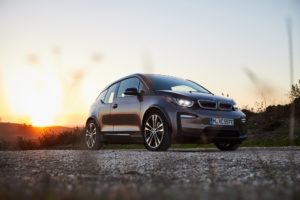 La versione più potente del sistema di propulsione è installata anche nella MINI Cooper SE. La differenza più cruciale rispetto alla BMW i3s è che il primo veicolo puramente elettrico della MINI è dotato di trazione anteriore, caratteristica del marchio. Al contrario, la BMW i3 e la BMW i3 si affidano al classico concetto di trazione posteriore. La flessibilità della tecnologia BMW eDrive si riflette anche nella versione specifica del modello della batteria ad alta tensione, che è a forma di T e situata in profondità nel pavimento del veicolo. Di conseguenza, la quantità di spazio disponibile per gli occupanti e il volume del bagagliaio nella MINI Cooper SE sono esattamente gli stessi di quelli delle varianti di modello a propulsione convenzionale della MINI a 3 porte.
La versione più potente del sistema di propulsione è installata anche nella MINI Cooper SE. La differenza più cruciale rispetto alla BMW i3s è che il primo veicolo puramente elettrico della MINI è dotato di trazione anteriore, caratteristica del marchio. Al contrario, la BMW i3 e la BMW i3 si affidano al classico concetto di trazione posteriore. La flessibilità della tecnologia BMW eDrive si riflette anche nella versione specifica del modello della batteria ad alta tensione, che è a forma di T e situata in profondità nel pavimento del veicolo. Di conseguenza, la quantità di spazio disponibile per gli occupanti e il volume del bagagliaio nella MINI Cooper SE sono esattamente gli stessi di quelli delle varianti di modello a propulsione convenzionale della MINI a 3 porte.
Vetture elettrificate, compresi i Mild Hybrid a 48 V, del BMW Group disponibili sul mercato italiano. Aggiornamento 11/12.2020
| Modello | Tecnologia | CV | CO2 g/km | Note al sistema elettrico |
| MINI | ||||
| Cooper SE | Full Electric | 184 | – | Range: NEDC corr. (261-270 km) |
| MINI Countryman | ||||
| Countryman COOPER SE ALL4 | Plug-in Hybrid | 220 | 40 | Autonomia elettrica: 55-61 km |
| BMW i3 | ||||
| i3 120 Ah | Full Electric | 170 | – | Range: WLTP (285-310 km) – NEDC corr. (359) |
| i3s 120 Ah | Full Electric | 184 | – | Range: WLTP (270-285 km) – NEDC corr. (330-345) |
| BMW Serie 2 | ||||
| 225xe iPerformance | Plug-in Hybrid | 125 | 42-47 | Autonomia elettrica: 55-57 km |
| BMW Serie 3 | ||||
| 316d | Mild Hybrid 48 V | 122 | 99-107 | Supporto al motore termico |
| 318d | Mild Hybrid 48 V | 150 | 99-107 | Supporto al motore termico |
| 320d | Mild Hybrid 48 V | 190 | 105-112 | Supporto al motore termico |
| 320d xDrive | Mild Hybrid 48 V | 190 | 117-122 | Supporto al motore termico |
| 330d | Mild Hybrid 48 V | 286 | 116-125 | Supporto al motore termico |
| 330d xDrive | Mild Hybrid 48 V | 286 | 123-132 | Supporto al motore termico |
| M340D xDrive | Mild Hybrid 48 V | 340 | 139-149 | Supporto al motore termico |
| M340i | Mild Hybrid 48 V | 374 | 159-167 | Supporto al motore termico |
| 330e | Plug-in Hybrid | 292 | 35-41 | Autonomia elettrica: 64-71 km |
| 330e xDrive | Plug-in Hybrid | 292 | 40-45 | Autonomia elettrica: 60-66 km |
| 316d Touring | Mild Hybrid 48 V | 122 | 105-114 | Supporto al motore termico |
| 318d Touring | Mild Hybrid 48 V | 150 | 105-114 | Supporto al motore termico |
| 320d Touring | Mild Hybrid 48 V | 190 | 109-118 | Supporto al motore termico |
| 320d xDrive Touring | Mild Hybrid 48 V | 190 | 117-125 | Supporto al motore termico |
| 330d | Mild Hybrid 48 V | 286 | 119-128 | Supporto al motore termico |
| 330d xDrive | Mild Hybrid 48 V | 286 | 127-136 | Supporto al motore termico |
| M340D xDrive Touring | Mild Hybrid 48 V | 340 | 143-153 | Supporto al motore termico |
| M340i Touring | Mild Hybrid 48 V | 374 | 163-172 | Supporto al motore termico |
| 330e Touring | Plug-in Hybrid | 292 | 38-44 | Autonomia elettrica: 60-67 km |
| 330e xDrive Touring | Plug-in Hybrid | 292 | 43-49 | Autonomia elettrica: 58-63 km |
| BMW Serie 4 | ||||
| 420d | Mild Hybrid 48 V | 190 | 103-112 | Supporto al motore termico |
| 420d xDrive | Mild Hybrid 48 V | 190 | 112-121 | Supporto al motore termico |
| M440i xDrive | Mild Hybrid 48 V | 374 | 155-163 | Supporto al motore termico |
| BMW Serie 5 | ||||
| 518d | Mild Hybrid 48 V | 150 | 108-112 | Supporto al motore termico |
| 520d | Mild Hybrid 48 V | 190 | 108-112 | Supporto al motore termico |
| 520d xDrive | Mild Hybrid 48 V | 190 | 114-118 | Supporto al motore termico |
| 530d 183 kW | Mild Hybrid 48 V | 249 | 118-122 | Supporto al motore termico |
| 530d xDrive 183 kW | Mild Hybrid 48 V | 249 | 125-131 | Supporto al motore termico |
| 540d xDrive | Mild Hybrid 48 V | 340 | 131-135 | Supporto al motore termico |
| 530e | Plug-in Hybrid | 292 | 39-43 | Autonomia elettrica: 62-67 km |
| 530e xDrive | Plug-in Hybrid | 292 | 46-49 | Autonomia elettrica: 56-58 km |
| 545e xDrive | Plug-in Hybrid | 394 | 49-53 | Autonomia elettrica: 55-58 km |
| 520i | Mild Hybrid 48 V | 184 | 120-125 | Supporto al motore termico |
| 530i | Mild Hybrid 48 V | 252 | 121-126 | Supporto al motore termico |
| 530i xDrive | Mild Hybrid 48 V | 252 | 135-140 | Supporto al motore termico |
| 540i xDrive | Mild Hybrid 48 V | 333 | 152-156 | Supporto al motore termico |
| M550i xDrive | Mild Hybrid 48 V | 530 | 221-229 | Supporto al motore termico |
| 518d Touring | Mild Hybrid 48 V | 150 | 109-114 | Supporto al motore termico |
| 520d Touring | Mild Hybrid 48 V | 190 | 113-119 | Supporto al motore termico |
| 520d xDrive Touring | Mild Hybrid 48 V | 190 | 120-124 | Supporto al motore termico |
| 530d 183 kW Touring | Mild Hybrid 48 V | 249 | 123-128 | Supporto al motore termico |
| 530d xDrive 183 kW Touring | Mild Hybrid 48 V | 249 | 133-137 | Supporto al motore termico |
| 540d xDrive Touring | Mild Hybrid 48 V | 340 | 138-142 | Supporto al motore termico |
| 530e Touring | Plug-in Hybrid | 292 | 42-46 | Autonomia elettrica: 59-63 km |
| 530e xDrive Touring | Plug-in Hybrid | 292 | 50-54 | Autonomia elettrica: 54-57 km |
| 520i Touring | Mild Hybrid 48 V | 184 | 126-131 | Supporto al motore termico |
| 530i Touring | Mild Hybrid 48 V | 252 | 127-133 | Supporto al motore termico |
| 530i xDrive Touring | Mild Hybrid 48 V | 252 | 142-147 | Supporto al motore termico |
| 540i xDrive Touring | Mild Hybrid 48 V | 333 | 159-164 | Supporto al motore termico |
| BMW Serie 6 Gran Turismo | ||||
| 620d | Mild Hybrid 48 V | 190 | 116-120 | Supporto al motore termico |
| 620d xDrive | Mild Hybrid 48 V | 190 | 124-129 | Supporto al motore termico |
| 630d | Mild Hybrid 48 V | 286 | 128-133 | Supporto al motore termico |
| 630d xDrive | Mild Hybrid 48 V | 286 | 135-140 | Supporto al motore termico |
| 640d xDrive | Mild Hybrid 48 V | 340 | 141-147 | Supporto al motore termico |
| 630i | Mild Hybrid 48 V | 258 | 135-139 | Supporto al motore termico |
| BMW Serie 7 | ||||
| 730d | Mild Hybrid 48 V | 286 | 123-128 | Supporto al motore termico |
| 730d xDrive | Mild Hybrid 48 V | 286 | 133-138 | Supporto al motore termico |
| 740d xDrive | Mild Hybrid 48 V | 340 | 136-142 | Supporto al motore termico |
| 745e | Plug-in Hybrid | 394 | 48-51 | Autonomia elettrica: 55-58 km |
| 730Ld xDrive | Mild Hybrid 48 V | 286 | 133-139 | Supporto al motore termico |
| 740Ld xDrive | Mild Hybrid 48 V | 340 | 137-143 | Supporto al motore termico |
| 745Le xDrive | Plug-in Hybrid | 394 | 52-57 | Autonomia elettrica: 54-51 km |
| BMW Serie 8 | ||||
| 840d xDrive Cabrio | Mild Hybrid 48 V | 340 | 148-159 | Supporto al motore termico |
| 840d xDrive Coupé | Mild Hybrid 48 V | 340 | 143-154 | Supporto al motore termico |
| 840d xDrive Gran Coupé | Mild Hybrid 48 V | 340 | 144-155 | Supporto al motore termico |
| BMW X1 | ||||
| xDrive25e | Plug-in Hybrid | 220 | 43-48 | Autonomia elettrica: 54-57 km |
| BMW X2 | ||||
| xDrive25e | Plug-in Hybrid | 220 | 43-47 | Autonomia elettrica: 55-57 km |
| BMW X3 | ||||
| sDrive18d | Mild Hybrid 48 V | 150 | 116-123 | Supporto al motore termico |
| xDrive20d | Mild Hybrid 48 V | 190 | 126-132 | Supporto al motore termico |
| xDrive30d | Mild Hybrid 48 V | 286 | 137-145 | Supporto al motore termico |
| xDrive30d 183 kW | Mild Hybrid 48 V | 249 | 137-145 | Supporto al motore termico |
| xDriveM40d | Mild Hybrid 48 V | 340 | 148-151 | Supporto al motore termico |
| xDrive30e | Plug-in Hybrid | 292 | 47-52 | Autonomia elettrica: 53-58 km |
| iX3 | Full Electric | 286 | – | Range: WLTP (450-459 km) – NEDC corr. (510-520) |
| BMW X4 | ||||
| xDrive20d | Mild Hybrid 48 V | 190 | 125-132 | Supporto al motore termico |
| xDrive30d | Mild Hybrid 48 V | 286 | 136-143 | Supporto al motore termico |
| xDrive30d 183 kW | Mild Hybrid 48 V | 249 | 136-143 | Supporto al motore termico |
| xDriveM40d | Mild Hybrid 48 V | 340 | 147-150 | Supporto al motore termico |
| BMW X5 | ||||
| xDrive30d | Mild Hybrid 48 V | 286 | 150-163 | Supporto al motore termico |
| xDrive40d | Mild Hybrid 48 V | 340 | 154-166 | Supporto al motore termico |
| xDrive40i | Mild Hybrid 48 V | 333 | 183-203 | Supporto al motore termico |
| xDrive45e | Plug-in Hybrid | 394 | 37-47 | Autonomia elettrica: 87-102 km |
| BMW X6 | ||||
| xDrive30d | Mild Hybrid 48 V | 286 | 149-162 | Supporto al motore termico |
| xDrive40d | Mild Hybrid 48 V | 340 | 153-164 | Supporto al motore termico |
| xDrive40i | Mild Hybrid 48 V | 333 | 181-196 | Supporto al motore termico |
| BMW X7 | ||||
| xDrive40d | Mild Hybrid 48 V | 340 | 167-173 | Supporto al motore termico |
| xDrive40i | Mild Hybrid 48 V | 333 | 199-204 | Supporto al motore termico |
Fonte: BMW Group Italia

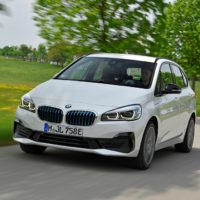




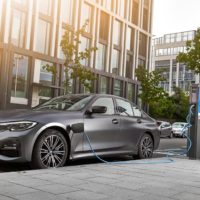
















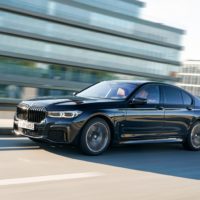







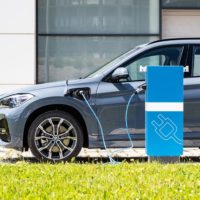





Commenta per primo